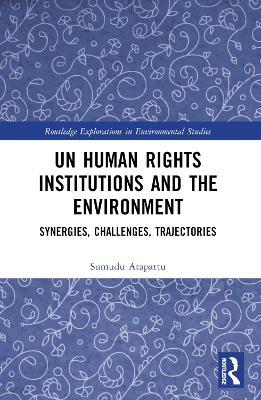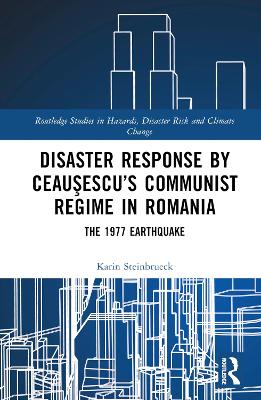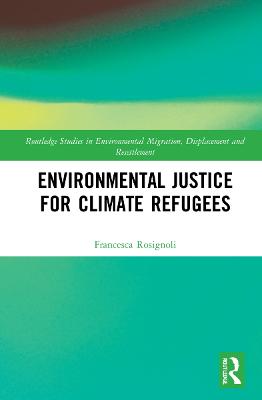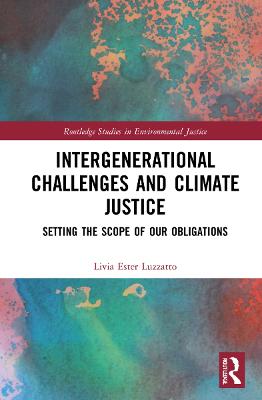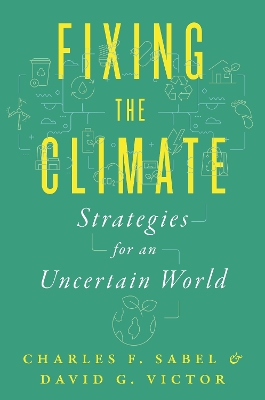Rectifying Climate Injustice
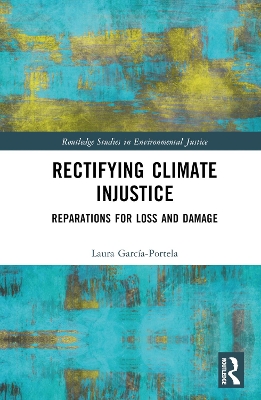 portes grátis
portes grátis
Rectifying Climate Injustice
Reparations for Loss and Damage
Garcia-Portela, Laura
Taylor & Francis Ltd
10/2024
168
Dura
9781032508344
Pré-lançamento - envio 15 a 20 dias após a sua edição
Descrição não disponível.
Introduction
1. An international mechanism for loss and damage
1.1 A brief history of loss and damage
1.2 Contributing to an International Mechanism for Loss and Damage
1.3 The contested role of compensation in climate negotiations
2. A terminological note
3. Philosophical Methodology
3.1 General methodology: reflective equilibrium
3.2 Climate justice specific methodology
4. Assumptions and limitations 4.1 The scope of justice: recipients and duty-bearers of climate justice
4.2 Sufficientarianism: background theory of distributive justice
5. Summary of chapters
Chapter One: A minimal capabilities-based approach
1. Life disruptions as harm and the minimal understanding of loss and damage
2. A minimal capabilities-based account of loss and damage.
3. Answering some challenges to an ex-post categorization of L&D
4. Conceptual clarifications and types of reparation for loss and damage
4.1 The notions of 'loss' and 'damage' in loss and damage
4.2 Reparations for economic damage, non-economic losses, and non-economic damage
5. Conclusions
Chapter Two: In search for a justified rectificatory justice principle
1. Two Objections against the Polluter Pays Principle
2. The Beneficiary Pays Principle and Some Intuitive Reactions to the Objections
3. The Causation Objection and the Beneficiary Pays Principle
4. The Excusable Ignorance Objection and Fairness Considerations
4.1 A fresh look at the Excusable Ignorance Objection
4.2 Fairness Considerations, the Beneficiary Pays Principle, and Replies to Some Objections.
5. Conclusions
Chapter Three: Reasons awaiting satisfaction
1. The continuity thesis and the Continuity Account
2. The Continuity Account and the objections against the Polluter Pays Principle
3. Alternative accounts
3.1 Strict liability
3.2 Counterfactual liability
3.3 Outcome responsibility
4. Conclusions
Chapter Four: Climate Harm and Attribution Science
1. Attribution methods: the probabilistic and the storyline approach 2. The reaction and criticism of the PEA community towards the storyline approach 3. The storyline approach and the criticism of overstatement 4. On how the probabilistic approach is affected by similar objections 5. Conclusions
Chapter Five: Towards a Rectificatory Policy Mechanism for Loss and Damage
1. Towards an adequacy-for-purpose view for attribution methods
2. An adequacy-for-purpose view for rectifying climate injustice
3. Distributing liability and achieving rectificatory justice
4. The Political Feasibility Objection
4.1 Introducing and exploring the feasibility concern
4.2 Motivational and psychological aspects of the Political Feasibility Objection
5. Conclusions
Final Conclusions
Index
1. An international mechanism for loss and damage
1.1 A brief history of loss and damage
1.2 Contributing to an International Mechanism for Loss and Damage
1.3 The contested role of compensation in climate negotiations
2. A terminological note
3. Philosophical Methodology
3.1 General methodology: reflective equilibrium
3.2 Climate justice specific methodology
4. Assumptions and limitations 4.1 The scope of justice: recipients and duty-bearers of climate justice
4.2 Sufficientarianism: background theory of distributive justice
5. Summary of chapters
Chapter One: A minimal capabilities-based approach
1. Life disruptions as harm and the minimal understanding of loss and damage
2. A minimal capabilities-based account of loss and damage.
3. Answering some challenges to an ex-post categorization of L&D
4. Conceptual clarifications and types of reparation for loss and damage
4.1 The notions of 'loss' and 'damage' in loss and damage
4.2 Reparations for economic damage, non-economic losses, and non-economic damage
5. Conclusions
Chapter Two: In search for a justified rectificatory justice principle
1. Two Objections against the Polluter Pays Principle
2. The Beneficiary Pays Principle and Some Intuitive Reactions to the Objections
3. The Causation Objection and the Beneficiary Pays Principle
4. The Excusable Ignorance Objection and Fairness Considerations
4.1 A fresh look at the Excusable Ignorance Objection
4.2 Fairness Considerations, the Beneficiary Pays Principle, and Replies to Some Objections.
5. Conclusions
Chapter Three: Reasons awaiting satisfaction
1. The continuity thesis and the Continuity Account
2. The Continuity Account and the objections against the Polluter Pays Principle
3. Alternative accounts
3.1 Strict liability
3.2 Counterfactual liability
3.3 Outcome responsibility
4. Conclusions
Chapter Four: Climate Harm and Attribution Science
1. Attribution methods: the probabilistic and the storyline approach 2. The reaction and criticism of the PEA community towards the storyline approach 3. The storyline approach and the criticism of overstatement 4. On how the probabilistic approach is affected by similar objections 5. Conclusions
Chapter Five: Towards a Rectificatory Policy Mechanism for Loss and Damage
1. Towards an adequacy-for-purpose view for attribution methods
2. An adequacy-for-purpose view for rectifying climate injustice
3. Distributing liability and achieving rectificatory justice
4. The Political Feasibility Objection
4.1 Introducing and exploring the feasibility concern
4.2 Motivational and psychological aspects of the Political Feasibility Objection
5. Conclusions
Final Conclusions
Index
Este título pertence ao(s) assunto(s) indicados(s). Para ver outros títulos clique no assunto desejado.
climate change;climate change loss;change loss and damage;environmental justice;climate justice
Introduction
1. An international mechanism for loss and damage
1.1 A brief history of loss and damage
1.2 Contributing to an International Mechanism for Loss and Damage
1.3 The contested role of compensation in climate negotiations
2. A terminological note
3. Philosophical Methodology
3.1 General methodology: reflective equilibrium
3.2 Climate justice specific methodology
4. Assumptions and limitations 4.1 The scope of justice: recipients and duty-bearers of climate justice
4.2 Sufficientarianism: background theory of distributive justice
5. Summary of chapters
Chapter One: A minimal capabilities-based approach
1. Life disruptions as harm and the minimal understanding of loss and damage
2. A minimal capabilities-based account of loss and damage.
3. Answering some challenges to an ex-post categorization of L&D
4. Conceptual clarifications and types of reparation for loss and damage
4.1 The notions of 'loss' and 'damage' in loss and damage
4.2 Reparations for economic damage, non-economic losses, and non-economic damage
5. Conclusions
Chapter Two: In search for a justified rectificatory justice principle
1. Two Objections against the Polluter Pays Principle
2. The Beneficiary Pays Principle and Some Intuitive Reactions to the Objections
3. The Causation Objection and the Beneficiary Pays Principle
4. The Excusable Ignorance Objection and Fairness Considerations
4.1 A fresh look at the Excusable Ignorance Objection
4.2 Fairness Considerations, the Beneficiary Pays Principle, and Replies to Some Objections.
5. Conclusions
Chapter Three: Reasons awaiting satisfaction
1. The continuity thesis and the Continuity Account
2. The Continuity Account and the objections against the Polluter Pays Principle
3. Alternative accounts
3.1 Strict liability
3.2 Counterfactual liability
3.3 Outcome responsibility
4. Conclusions
Chapter Four: Climate Harm and Attribution Science
1. Attribution methods: the probabilistic and the storyline approach 2. The reaction and criticism of the PEA community towards the storyline approach 3. The storyline approach and the criticism of overstatement 4. On how the probabilistic approach is affected by similar objections 5. Conclusions
Chapter Five: Towards a Rectificatory Policy Mechanism for Loss and Damage
1. Towards an adequacy-for-purpose view for attribution methods
2. An adequacy-for-purpose view for rectifying climate injustice
3. Distributing liability and achieving rectificatory justice
4. The Political Feasibility Objection
4.1 Introducing and exploring the feasibility concern
4.2 Motivational and psychological aspects of the Political Feasibility Objection
5. Conclusions
Final Conclusions
Index
1. An international mechanism for loss and damage
1.1 A brief history of loss and damage
1.2 Contributing to an International Mechanism for Loss and Damage
1.3 The contested role of compensation in climate negotiations
2. A terminological note
3. Philosophical Methodology
3.1 General methodology: reflective equilibrium
3.2 Climate justice specific methodology
4. Assumptions and limitations 4.1 The scope of justice: recipients and duty-bearers of climate justice
4.2 Sufficientarianism: background theory of distributive justice
5. Summary of chapters
Chapter One: A minimal capabilities-based approach
1. Life disruptions as harm and the minimal understanding of loss and damage
2. A minimal capabilities-based account of loss and damage.
3. Answering some challenges to an ex-post categorization of L&D
4. Conceptual clarifications and types of reparation for loss and damage
4.1 The notions of 'loss' and 'damage' in loss and damage
4.2 Reparations for economic damage, non-economic losses, and non-economic damage
5. Conclusions
Chapter Two: In search for a justified rectificatory justice principle
1. Two Objections against the Polluter Pays Principle
2. The Beneficiary Pays Principle and Some Intuitive Reactions to the Objections
3. The Causation Objection and the Beneficiary Pays Principle
4. The Excusable Ignorance Objection and Fairness Considerations
4.1 A fresh look at the Excusable Ignorance Objection
4.2 Fairness Considerations, the Beneficiary Pays Principle, and Replies to Some Objections.
5. Conclusions
Chapter Three: Reasons awaiting satisfaction
1. The continuity thesis and the Continuity Account
2. The Continuity Account and the objections against the Polluter Pays Principle
3. Alternative accounts
3.1 Strict liability
3.2 Counterfactual liability
3.3 Outcome responsibility
4. Conclusions
Chapter Four: Climate Harm and Attribution Science
1. Attribution methods: the probabilistic and the storyline approach 2. The reaction and criticism of the PEA community towards the storyline approach 3. The storyline approach and the criticism of overstatement 4. On how the probabilistic approach is affected by similar objections 5. Conclusions
Chapter Five: Towards a Rectificatory Policy Mechanism for Loss and Damage
1. Towards an adequacy-for-purpose view for attribution methods
2. An adequacy-for-purpose view for rectifying climate injustice
3. Distributing liability and achieving rectificatory justice
4. The Political Feasibility Objection
4.1 Introducing and exploring the feasibility concern
4.2 Motivational and psychological aspects of the Political Feasibility Objection
5. Conclusions
Final Conclusions
Index
Este título pertence ao(s) assunto(s) indicados(s). Para ver outros títulos clique no assunto desejado.

